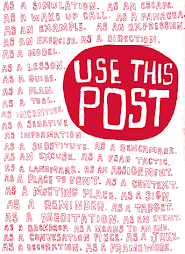skip to main |
skip to sidebar
via..

Dark secret exposed by Mark Changizi: the way we find our ideas is almost always an embarrassing display of buffoonery
The result is that how we scientists find our ideas is ugly, and frankly embarrassing to show folks. That’s why we don’t put this part of the process into our journal articles or books.
Why we need to share the messy more...
First, students of science would be best prepared for making their own discoveries if they could see more examples of what their older mentors actually did to make theirs.
Second, if this crucial step in the discovery process is not well appreciated, then the funding mechanisms for science won’t work well. In constructing a rigorous theory with loads of empirical and theoretical constraints, one cannot be sure one has succeeded until, well, one actually succeeds in finding it. The process is inherently non-incremental—provably non-incremental, as I mentioned earlier—and thus by its nature not the sort of thing one can currently get a grant for.
Most of what I wrote, if actually understood by anyone, was, I realized, ridiculously daft and silly. I’m not actually embarrassed that my notebook is like that—it’s like that by design, for keeping a low threshold for writing down ideas is key to eventually stumbling onto a good one.
Designing my research notes to be friendlier didn’t work out, and would have only undermined the role my notes play in my own discovery process.
But it occurred to me recently that there is a simple way to begin illustrating just how much junk lies in the science trunk. Of the thirty to forty research notebooks I’ve filled with tiny handwriting over the last dozen years, I can show a sample.
My intent here is to indicate just how much of the sort of notes and brainstorming goes on.
And it also shields me from the humiliation of you reading hundreds of pages of my disorganized senselessness.
...that same disorganized senselessness that is vital to the creative process.








































